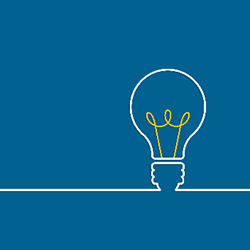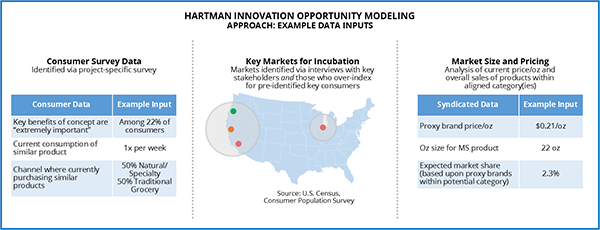Demand-Side Growth Strategy: Introducing Hartman Innovation Opportunity Modeling
 While many tomes have been written on the subject through the ages, we all know that there is no magic formula for success. And there are no guarantees that sheer diligence and hard work will even be rewarded. You can experiment with brand extensions or tweak existing product categories, but that’s not real innovation. Repackaging or reformulating your product may stimulate interest or lead to an uptick in sales, but that’s not innovation either.
While many tomes have been written on the subject through the ages, we all know that there is no magic formula for success. And there are no guarantees that sheer diligence and hard work will even be rewarded. You can experiment with brand extensions or tweak existing product categories, but that’s not real innovation. Repackaging or reformulating your product may stimulate interest or lead to an uptick in sales, but that’s not innovation either.
True innovation lies in what we would say is “a new way of doing,” as in when Elon Musk turned his attention from disrupting the automobile industry to redefining the way rockets are not just launched into space but return — upright to the launching pad — to be used again. Now that’s a new way of doing indeed.
Innovation in food and beverage doesn’t have to be rocket science.
We know that the challenges and choices food and beverage companies are facing can be downright confusing and more than a bit daunting. America’s foodways are becoming more sophisticated and diverse as consumers increasingly aspire to higher-quality food experiences they simply did not grow up with.
Consider that consumers are more food literate than ever before: advances in media and technology have made information more readily accessible, and food retailers have created communications vehicles to increase customer engagement. At the same time, consumers’ expectations of food and beverage companies have heightened. Consumers want to know more (and more) about who made the product, what’s in the product and where it was made, not to mention how people and animals are treated.
These and other transformative forces at play in today’s food and beverage marketplace are upending the competitive structure of businesses, categories and strategies. The good news is that there is a silver lining to the chaos and confusion in food and beverage innovation: not only do new opportunities abound, innovation opportunities can be modeled to deliver consumer-based size of prize.
Hartman Innovation Opportunity Modeling
The Hartman Group’s core expertise is on the demand side of the food and beverage business. We are focused on what creates and sustains long-term consumer demand for innovative food products, services and experiences. Our constant contact with consumers puts us in a unique position to interpret the real “why” behind market trends. This collective experience and expertise has led to the development of Hartman Innovation Opportunity Modeling.
Hartman Innovation Opportunity Modeling is our unique, proprietary product delivering consumer-led topline sizing for our clients’ innovation concepts/opportunities. It is designed to help clients evaluate and prioritize concepts with regard to both near- and long-term strategy in the U.S. marketplace. We recommend that this work be run as a complement to concept testing to help establish overall market potential.
It helps address such questions as:
- What is the expected potential of my concept(s) in the short term and long term?
- How should I prioritize innovation concepts?
- How are consumers currently taking part in this space?
Unlike traditional financial modeling, which is focused on operational and financial metrics, Hartman Innovation Opportunity Modeling delivers a thorough evaluation of a concept’s expected size of prize based upon real consumer-demand behavior, opportunities within food culture and contextual retail-sales performance. By taking into account the consumer alongside sales, channel and other key go-to-market strategic factors, Hartman builds an integrated projection of a concept’s future sales size.
To learn more about Hartman Innovation Opportunity Modeling, approach and deliverables, contact: shelley@hartman-group.com

